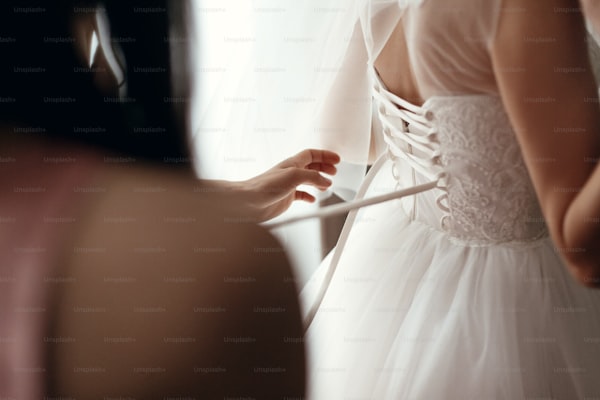How to Preserve the Original Design of a Wedding Dress During Extensive Alterations
How to Preserve the Original Design of a Wedding Dress During Extensive Alterations
Weddings are a celebration of love and unity, and for many brides, the wedding dress symbolizes one of the most significant moments in their lives. However, what happens when your dream wedding dress requires extensive alterations? The thought of transforming this cherished garment may raise concerns about maintaining its original design. In this article, we'll explore effective strategies to ensure the essence of your wedding dress remains intact, even during substantial modifications.
The Importance of Retaining Original Elements
When it comes to Wedding dresses, many brides have a clear vision of how they want their dress to look on their special day. Retaining certain original design elements is crucial for several reasons:
- Emotional Value: Your wedding dress holds sentimental significance. Altering it too much might detract from its emotional value.
- Photographic Consistency: Your vision for your wedding day is often depicted in inspiration photos. Maintaining the original design helps align the final look with those images.
- Market Value: A dress altered too extensively may decrease its resale value in the future.
Key Considerations Before Alterations Begin
Before diving into the alteration process, consider the following aspects:
1. Choose the Right Tailor
Experience Matters: Select a tailor who specializes in Wedding dresses and has a solid portfolio. They'll be familiar with preserving intricate design elements throughout the alteration process.
2. Know Your Dress Materials
Understanding the fabrics used in your wedding dress is crucial. Different materials respond differently to alterations; some may require unique handling techniques to preserve their integrity.
3. Set a Clear Limit on Alterations
Discuss with your tailor what alterations are necessary and which elements must remain untouched. Setting these boundaries early on will help you avoid excessive changes.
Types of Alterations and How to Maintain Design
Weddings are unique, and so too are the alterations that may be necessary. Below are some common types of alterations and tips on maintaining the original design during the process:
| Type of Alteration | How to Preserve Original Design |
| Taking in or letting out seams | Ensure that the original lines and structure of the dress are preserved. Your tailor should focus on minor adjustments that maintain the overall silhouette. |
| Hem adjustments | Consider keeping a portion of the original hem to retain the dress’s original length and fullness. This is especially important for layered or intricate designs. |
| Strap or sleeve alterations | If sleeves are being modified, keep the original fabric and detail intact where possible. This ensures continuity in the overall design aesthetic. |
| Adding embellishments | When adding elements, choose materials and styles that complement the original design rather than overpowering it. This could include using similar beads or lace. |
Communicating with Your Tailor
Effective communication with your tailor can make the alteration process much smoother. Don't hesitate to express your concerns regarding the original design. Here are some tips for clear communication:
1. Share Inspiration Images
Bring along photos of the original dress design or similar styles to help convey your vision.
2. Be Honest About Your Preferences
If you have reservations about specific alterations proposed by your tailor, voice those concerns. A professional should be open to suggesting alternative approaches.
3. Schedule Fittings Frequently
Regular fittings are critical. This allows you to assess the progress and discuss any modifications needed to maintain the original look.
Dealing with Unexpected Changes
Sometimes, despite the best-laid plans, alterations can lead to unexpected changes. Here's how to navigate such situations:
1. Remain Flexible
While it’s essential to maintain the dress’s original features, some alterations may be necessary for structural integrity and fit. Be willing to adapt your expectations slightly.
2. Trust Your Tailor’s Expertise
Your tailor is trained to know what adaptations will work best for your dress. Trust their judgment on preserving the essence of the dress while making it fit you perfectly.
3. Consider Alternatives
If significant modifications threaten the original design, consult your stylist about seeking a different dress. In some cases, a similar style may be available that requires fewer alterations.

Final Thoughts
Altering a wedding dress doesn’t have to mean compromising its original beauty and design. By understanding the importance of retaining certain elements, selecting the right tailor, and maintaining clear communication throughout the alteration process, brides can achieve a dress that fits perfectly while still embodying their vision. Remember to approach alterations with a balance of flexibility and assertiveness to ensure your wedding dress is not only altered to fit you beautifully but also remains a cherished garment that holds its original significance. Congratulations on your upcoming wedding, and may your dress be a symbol of your love and joy on your special day!
Always remember, when planning alterations, it’s vital to maintain open communication, be specific about your desires and expectations, and trust the expertise of your professional tailor. With the right preparation, you can enjoy the perfect marriage of fit and design!
